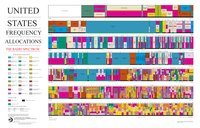
Photo from wikipedia
In 1999, the Federal Communication Commission (FCC) allocated the 5.9 GHz band (75 MHz of the spectrum) for DSRC-based Vehicle-to-Vehicle (V2V) and Vehicle-to-Infrastructure (V2I) communications required for intelligent transportation applications… Click to show full abstract
In 1999, the Federal Communication Commission (FCC) allocated the 5.9 GHz band (75 MHz of the spectrum) for DSRC-based Vehicle-to-Vehicle (V2V) and Vehicle-to-Infrastructure (V2I) communications required for intelligent transportation applications [1, 2]. The proposed communication technology employs IEEE 802.11p PHY and MAC layer models while the higher layers are based on the standards defined under IEEE 1609and SAE technical committees. This technology enables low-latency reliable ad hoc communications (broadcast mode) between vehicles as well as vehicles with infrastructure. In additions to very low latency links, this technology accommodates high-speed mobility, which makes it suitable for high-speed vehicular environment. The key enabler point for the use of this technology for automotive safety system (collision detection and avoidance system) is the fact that this technology provides low latency information exchange between the vehicles which are in communication range of each other for few seconds.
Journal Title: Wireless Networks
Year Published: 2018
Link to full text (if available)
Share on Social Media: Sign Up to like & get
recommendations!